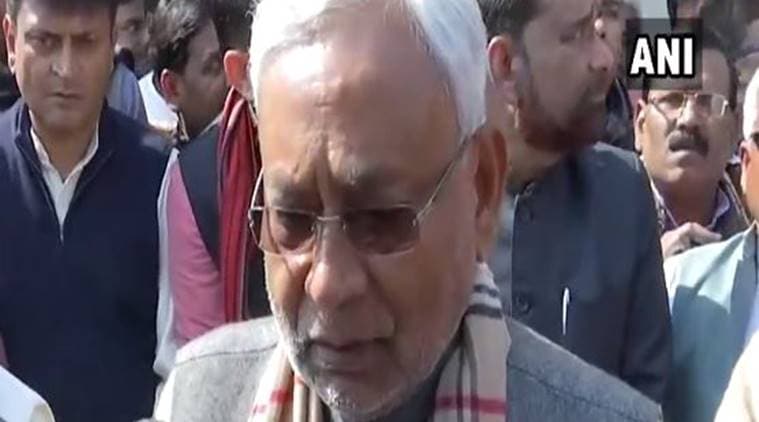
Bihar Chief Minister Nitish Kumar’s visit to the Sri Krishna Medical College and Hospital (SKMCH) in Muzaffarpur on Tuesday was met with protests from locals and families of the 105 children who died due to Acute Encephalitis Syndrome (AES). More than 300 children have been admitted with complaints of AES since June 1. Close to 90 of them have died.
Angry over the Chief Minister choosing to visit the hospital weeks after the outbreak, protesters outside the hospital started shouting slogans like “Nitish Kumar go back”
Pointing towards the water tank, one of the protester said, “This is today’s development. Things are being spruced up so that it makes a favourable impression on the chief minister. Had the CM visited earlier, it would have made the concerned people pull up their socks and many lives could have been saved.”
#WATCH Locals hold protest outside Sri Krishna Medical College and Hospital in Muzaffarpur as Bihar CM Nitish Kumar is present at the hospital; Death toll due to Acute Encephalitis Syndrome (AES) is 108. pic.twitter.com/N1Bpn5liVr
— ANI (@ANI) June 18, 2019
Kumar, who was flanked by his deputy Sushil Kumar Modi and cabinet colleague and local MLA Suresh Sharma, went to the ICU inside the hospital to take stock of the situation before holding an impromptu review meeting with hospital authorities and other health department officials.
Explained: What causes AES? What makes Bihar so vulnerable?
After the meeting the government swung into action, declaring it would bear the expense for treatment of those found with the syndrome even if it took place at private hospitals.
Instructions were also issued for equipping primary health centres with necessary facilities so that children with symptoms of AES in remote areas could be provided with medical attention closer home since, in several cases, the time involved in travelling to the district headquarters and seeking admission to hospitals had led to worsening of the condition of patients.
Medical Superintendent of SKMCH SK Shahi announced that a bulletin daily will be released at 3 pm today for an update on the situation. He also said that the Chief Minister was satisfied with the present medical treatment being provided. ” CM met the patients and their relatives. He was satisfied with the present medical treatment being provided & ordered us to release a bulletin daily at 3pm. He was pained by the fact that adequate facilities for treatment were not available at the hospital.”
The Chief Minister had earlier announced an ex-gratia of Rs 4 lakh for each child who succumbed in the outbreak. He also directed officials of the state health department, the district administration and doctors to take all possible measures to tackle the situation.
The National Human Rights Commission (NHRC) Monday issued notices to the Union Health Ministry and Bihar government and took suo motu cognisance of media reports about the rising number of deaths of children due to AES.
The human rights agency pointed out that the deaths of children in such a large number indicated a “possible flaw” in the proper implementation of the vaccination and awareness programmes.
According to a release issued by the district administration, 18 deaths were reported from Kejriwal Hospital in the district. Since January 1, 358 children with AES have been admitted to SKMCH and Kejriwal Matrisadan.
AES is a broad term involving several infections, and affects young children. The syndrome can be caused by viruses, bacteria or fungi. In India, the most common cause is the virus that causes Japanese encephalitis (JE). Health Ministry estimates attribute 5-35% of AES cases to the JE virus. In the latest outbreak in Muzaffarpur, the cause is yet to be clinically identified in most of the children.
With inputs from PTI